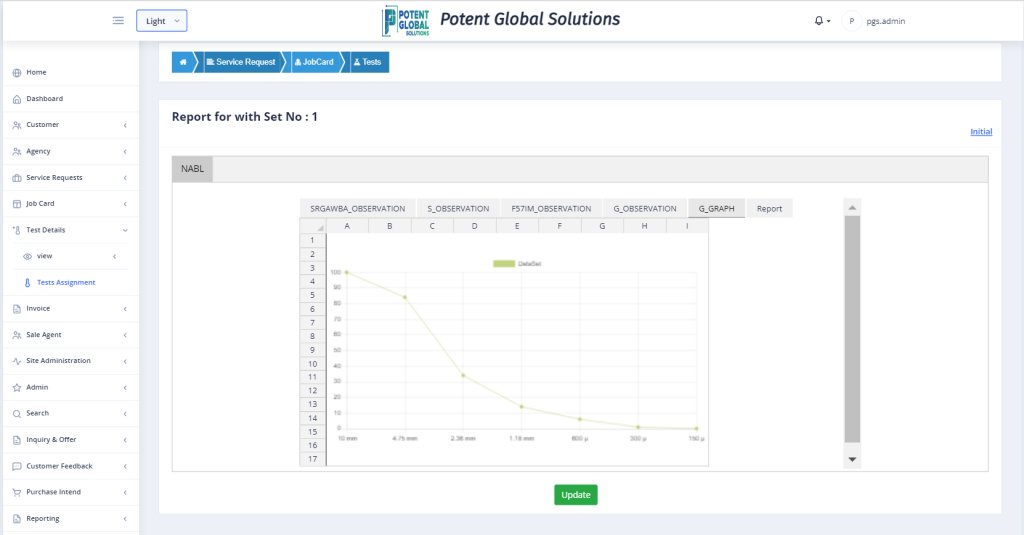POTENT LIMS
Potent LIMS is in compliance with ISO:9001 & ISO:17025. It is designed in such a way that it can integrate with report, observations or any other document formats that laboratoryis using and don’t mandate them to follow certain way of creating these documents. This is a very powerful feature which it offers as Laboratory can quickly migrate on to the software without changing much in their existing process and practices thus helping our clients in seamless digital transformation of their
laboratory.
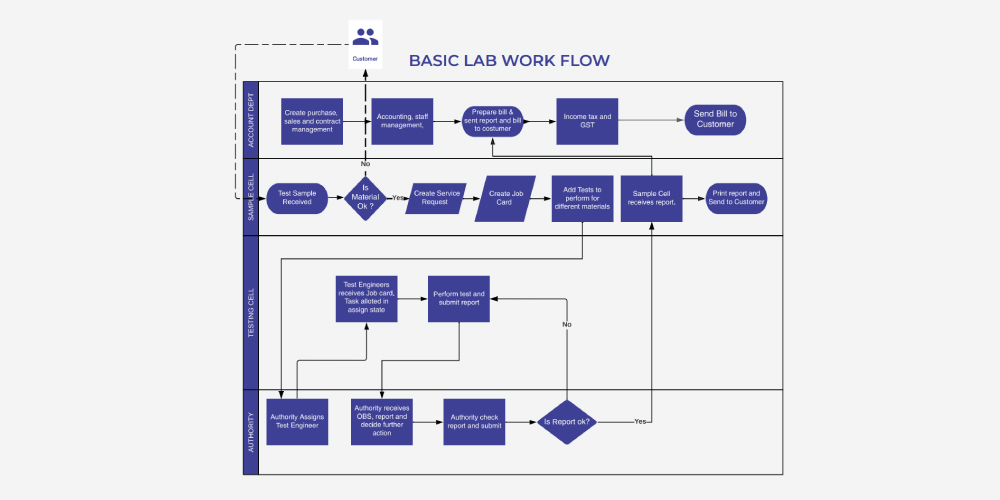
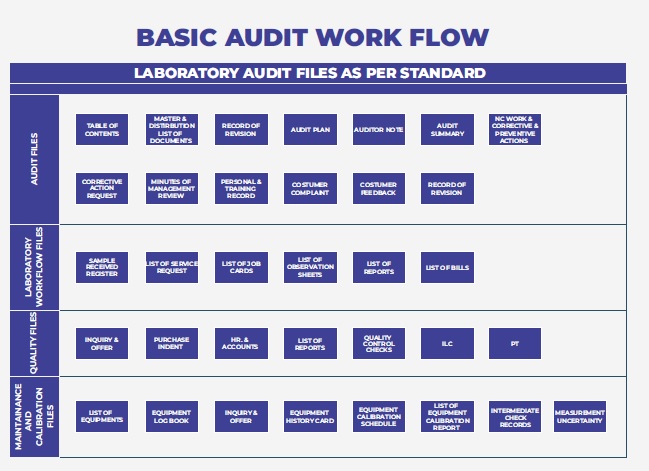
Material's & Test report Highlight's
Potent LiMS has the inbuild capability to carry out all types of soil mechanical testing within a Laboratory Information Management System (LIMS).Soil mechanical testing involves assessing the physical properties and behavior of soil samples under different conditions. This type of testing is crucial in geotechnical engineering, construction, and infrastructure projects, as it helps determine how soil will react when subjected to various loads, pressures, and environmental conditions. Here are some key test of soil mechanical testing:
Triaxial Testing: Triaxial testing evaluates soil strength and behavior under different stress conditions, providing valuable data for engineering designs involving soil, such as foundations, retaining walls, and embankments.
Direct Shear Testing: Direct shear tests measure the shear strength of soil along a predetermined plane. This helps understand soil stability and its response to shear forces.
Consolidation Testing: Consolidation tests assess how soils settle and compress under loading, which is crucial for understanding foundation settlement and time-dependent behavior.
Permeability Testing: Permeability tests determine how easily water flows through soil. This is important for assessing drainage characteristics and designing structures that interact with water.
Compaction Testing: Compaction tests evaluate soil density and moisture content to ensure proper compaction during construction, reducing the risk of future settlement.
California Bearing Ratio (CBR) Testing: CBR tests assess the strength of a soil subgrade by comparing its bearing capacity with a standard material. This is used in pavement design and evaluation.
Unconfined Compression Testing: Unconfined compression tests measure the strength of cohesive soils under axial loading without lateral confinement.
Atterberg Limits Testing: Atterberg limits tests determine the plastic and liquid limits of soils, indicating their consistency and potential for volume change.
Shear Strength Testing: Shear strength tests evaluate the ability of soil to resist shear forces and deformation, important for slope stability and earthwork projects.
Oedometer Testing: Oedometer tests, also known as one-dimensional consolidation tests, assess the compressibility and settlement behavior of soils.
These tests provide valuable information for geotechnical engineers, construction professionals, and researchers to make informed decisions during project planning, design, and execution. The data generated from soil mechanical testing helps ensure the safety, stability, and longevity of structures built on or with soil materials.
Field tests are conducted on-site to assess the properties and conditions of materials, structures, or environments. These tests provide valuable information that guides decision-making, ensures quality, and enhances safety. Here are some common types of field testing:
Field Compaction Testing: Field compaction tests assess the density and moisture content of soil during construction, ensuring proper compaction for foundations, roads, and other structures.The Core Cutter Method and the Sand Replacement Method are both field tests used to determine the in-place density of compacted soils. These methods are commonly employed in geotechnical engineering, construction, and quality control to assess the compaction characteristics of soils
Plate Load Tests: Plate load tests measure the bearing capacity of soil underneath structures, helping engineers design foundations.
Pile load Tests: Pile load tests are crucial geotechnical tests used to assess the load-carrying capacity, behavior, and performance of deep foundation elements, such as piles. These tests help engineers understand how piles respond under different loading conditions, ensuring the safety and stability of structures that rely on deep foundations. Here are three common types of pile load tests 1. Pile Load Test (Vertical): Vertical pile load tests are conducted to determine the vertical load-carrying capacity of a pile. The test involves applying incremental vertical loads to the pile and measuring the pile’s response, including the settlement and the corresponding load 2. Pile Load Test (Lateral): Lateral pile load tests assess the lateral load-carrying capacity of a pile and its behavior when subjected to lateral loads. Lateral loads may result from wind, seismic forces, or other lateral loads on structures 3. Pile Load Test (Pull Out): Pull out tests, also known as pile extraction tests, assess the bond between the pile and the surrounding soil by pulling the pile out of the ground. The test measures the ultimate pullout capacity of the pile, providing insights into factors such as pile installation quality, soil resistance, and pile design.
- Pavement Evaluation: Field tests assess the condition and load-bearing capacity of pavements to plan maintenance and repairs. BBD Test: The Benkelman Beam Deflection Test is a field test used to assess the deflection characteristics of flexible pavements, such as asphalt roads. This test is a non-destructive method to evaluate the structural condition of the pavement, determine its load-bearing capacity, and identify areas that may require maintenance or rehabilitation. The test measures the vertical deflection of the pavement surface under a moving wheel load.
The Standard Penetration Test (SPT) and bore logs are essential tools and methods used in geotechnical engineering to assess subsurface soil conditions, provide insights into soil properties, and inform engineering design and construction decisions. Let’s explore both the SPT test and bore logs in more detail:
Standard Penetration Test (SPT): The SPT test, as described earlier, involves driving a split-spoon sampler into the soil at regular intervals along a borehole and recording the number of blows required to penetrate the soil a specified distance. The N-values obtained from the SPT test provide valuable information about the relative density, stiffness, and strength of the soil.
Bore Logs: Bore logs are detailed records created during the drilling process to document soil and rock characteristics encountered at different depths in a borehole. Bore logs typically include:
- Depth: The depth at which each soil or rock layer is encountered.
- Soil Description: Detailed description of the soil or rock type, including color, texture, consistency, and presence of water.
- Stratigraphy: Information about the sequence and thickness of different soil and rock layers.
- SPT N-Values: N-values obtained from the SPT test, often recorded alongside the corresponding soil layers.
- Groundwater Level: The depth at which groundwater is encountered.
- Remarks: Additional notes about soil behavior, unexpected conditions, or any other relevant observations. Coring and Sampling: Collecting soil, rock, or environmental samples from the field for laboratory analysis and characterization.
Soil Classification: Visual inspection and field tests help classify soils on-site based on properties like grain size, consistency, and plasticity.
Groundwater Monitoring: Collecting and analyzing groundwater samples to assess water quality and contamination levels.
- Concrete Testing: On-site tests measure properties like slump, air content, and compressive strength of concrete to ensure quality in construction. Ultrasonic Pulse Velocity (UPV) test The Ultrasonic Pulse Velocity (UPV) test is a non-destructive testing method used to assess the quality and integrity of concrete, masonry, and other materials by measuring the speed of ultrasonic pulses passing through the material. The UPV test helps evaluate the uniformity, homogeneity, and potential defects within the material.
Field testing requires specialized equipment, expertise, and adherence to established protocols. The data collected during field tests informs project decisions, validates design assumptions, and ensures compliance with regulations. Integrating field test data into a Laboratory Information Management System (LIMS) like Potent LIMS can streamline data management, enhance reporting, and facilitate collaboration between field teams and laboratory personnel.
Potent LIMS offer a Calculation and Graph module that can help laboratories perform complex calculations and create visual representations of laboratory data.
Our Calculation module allows laboratories to create complex calculations and formulas that can be used to analyze and interpret laboratory data. This module includes a wide range of mathematical and statistical functions, as well as the ability to create custom formulas, ensuring that laboratories have the flexibility they need to perform calculations and analysis in the way that best suits their needs.
Our Graph module allows laboratories to create visual representations of laboratory data in the form of graphs and charts. This module includes a wide range of graph types, including line graphs, bar graphs, pie charts, and more, as well as the ability to customize graph colors, titles, and labels. The Graph module also includes the ability to generate reports and export data in a variety of formats, including Excel & PDF.
Together, our Calculation and Graph modules provide laboratories with a powerful toolset for analyzing, interpreting, and visualizing laboratory data. With features like custom formulas and a wide range of graph types, laboratories can gain deeper insights into their data and make better-informed decisions based on that data.
Potent LiMS has a buildin SDMS, or Scientific Data Management System, our software solution is designed to manage scientific data and related documents in a laboratory environment. Data security is a critical aspect of any LiMS solution, as laboratories deal with sensitive data that must be protected from unauthorized access or misuse.
There are are several measures that are taken to ensure the security of data in our LiMS solution:
User Authentication: A robust user authentication system is essential for ensuring that only authorized users can access the system. This can include measures such as strong passwords, two-factor authentication, and access control policies.
Access Control: Access control policies can be used to restrict access to sensitive data to only those users who need it. This can involve setting up roles and permissions for different users or groups, based on their job function and level of clearance.
Audit Trails: An audit trail is a log of all the actions taken on a piece of data, including who accessed it, when, and what changes were made. This can help identify any unauthorized access or changes to data.
Disaster Recovery: Disaster recovery measures can be put in place to ensure that data is not lost in the event of a system failure, natural disaster, or other unforeseen event. This can include regular backups of data, off-site storage, and data recovery plans.
Regular Security Audits: Regular security audits can help identify any vulnerabilities or weaknesses in the system, allowing them to be addressed before they can be exploited by hackers or other malicious actors.
Data security is a critical aspect of any LiMS solution, and laboratories must take appropriate measures to protect their sensitive data. By implementing user authentication, data encryption, access control policies, audit trails, disaster recovery measures, and regular security audits, laboratories can ensure that their data is protected from unauthorized access or misuse.
The Electronic Laboratory Notebook (ELN) is a digital solution designed to replace traditional paper-based notebooks used in laboratories. By eliminating the need for paper-based documentation, laboratories can reduce the risk of errors, improve data security, and streamline their workflow.
The ELN allows laboratories to create observation sheets, reports, and other documents directly within the software. This eliminates the need for paper-based documentation and makes it easier for laboratory staff to access and share data. Additionally, the ELN can offer advanced features like automatic calculations and formulae, which can further improve the accuracy of the data and speed up the data analysis process.
Many laboratories today use Excel spreadsheets to manage their data and documentation. The ELN offers a unique interface that is similar to Excel, making it easier for laboratories to transition to the LiMS software. The ELN interface allows laboratories to use Excel functions and formulas within the software, enabling more advanced calculations and data analysis.
Moreover, the ELN can provide additional benefits, including:
Improved Collaboration: The ELN makes it easier for laboratory staff to share and collaborate on data, reducing the need for manual data entry and minimizing the risk of errors.
Enhanced Data Security: The ELN can offer features like user authentication, access control, and data encryption to ensure the security and integrity of laboratory data.
Streamlined Workflow: The ELN can help automate many laboratory processes, reducing the time and effort required for routine tasks and freeing up laboratory staff to focus on more complex work.
Data analytics is a critical aspect of laboratory management, allowing laboratories to gain insights from their data and make informed decisions. Potent LIMS offer a range of analytics features that can help laboratories get the insights they need to make better decisions.
Our analytics features include metrics like the number of test service requests by date or month, sales statements, and other widely referred analytics. These metrics can be accessed through our reporting and analytics dashboard, allowing laboratory staff to easily view and analyze their data.
Moreover, we can configure any specific reporting or analytics as per the needs of our customers. Our software can be customized to meet the unique requirements of each laboratory, ensuring that they have access to the insights they need to make informed decisions.
Some additional benefits of our analytics features include:
Improved Decision Making: By providing laboratories with the insights they need to make informed decisions, our analytics features can help improve decision making and drive better outcomes.
Increased Efficiency: Our analytics features can help laboratories identify areas where they can improve efficiency and streamline their workflow, leading to reduced costs and improved productivity.
Enhanced Data Quality: By providing real-time insights into laboratory data, our analytics features can help laboratories identify and address data quality issues, ensuring the accuracy and integrity of their data.
We offer our customers the option to choose between cloud-based or on-premises installation of our software.
For laboratories that prefer a cloud-based installation, we offer a fully-managed, secure, and reliable cloud platform that provides easy access to laboratory data from anywhere in the world. Our cloud-based solution is designed to scale easily, making it suitable for laboratories of all sizes, from small startups to large enterprises. Our cloud-based solution also offers the advantage of automatic software updates, reducing the need for manual updates and maintenance.
For laboratories that prefer an on-premises installation, we offer a solution that can be installed on the laboratory’s own hardware or infrastructure. This option provides laboratories with full control over their data and infrastructure, ensuring that they have complete ownership and control over their laboratory data. Our on-premises solution also offers the advantage of increased security, as laboratory data is stored locally on the laboratory’s own servers or infrastructure.
We understand the importance of having access to laboratory data from virtually anywhere. That’s why our software is designed to be mobile-friendly, allowing laboratory staff to connect to their lab data from their smartphone or tablet device.
With our mobile-friendly software, laboratory staff can access key laboratory data from anywhere, at any time. They can view service requests, job cards, reports, and other data, as well as receive notifications and alerts directly on their mobile device. This can help improve communication and collaboration between laboratory staff, ensuring that everyone has access to the most up-to-date information.
In addition, our mobile-friendly software can offer other benefits, including:
Improved Efficiency: By providing laboratory staff with mobile access to lab data, our software can help improve efficiency and productivity, allowing staff to work more efficiently and effectively.
Increased Flexibility: Our mobile-friendly software allows laboratory staff to access lab data from virtually anywhere, providing increased flexibility and enabling staff to work from home, on-the-go, or from remote locations.
Enhanced Security: Our mobile-friendly software uses the same security protocols as our desktop software, ensuring that laboratory data is secure and protected, even when accessed from a mobile device.
Potent LIMS has a capability to integrate laboratory equipment with a laboratory information management system (LiMS) to improve the accuracy, speed, and efficiency of laboratory testing and reporting. That’s why we offer a range of integration options that allow laboratories to connect their modern laboratory equipment with our LiMS.
By connecting laboratory equipment with our LiMS, laboratory data can be automatically captured and entered into the system, reducing the risk of errors and eliminating the need for manual data entry. This can help improve the accuracy and consistency of laboratory testing, leading to more reliable and trustworthy results.
In addition, connecting laboratory equipment with our LiMS can help laboratories operate more efficiently and effectively, as testing data can be automatically routed to the appropriate laboratory personnel for review and reporting. This can help reduce the time and effort required to generate reports, leading to faster turnaround times and improved customer satisfaction.
Overall, integrating laboratory equipment with our LiMS can help laboratories provide more accurate, efficient, and impartial testing services, helping to build customer confidence in the laboratory’s work and enhancing the laboratory’s reputation for quality and reliability.
Potent LIMS is offered with both subscription-based and one-time pricing models to meet the needs of different types of customers.
Our subscription-based pricing model allows customers to pay a monthly or annual fee for access to our LiMS solution. This pricing model is often preferred by customers who want to avoid large upfront costs and want the flexibility to adjust their usage levels as their needs change over time. With our subscription-based pricing model, customers receive ongoing software updates and technical support as part of their subscription.
Our one-time pricing model allows customers to purchase our LiMS solution outright for a fixed, one-time cost. This pricing model is often preferred by customers who want to own the software outright and have more control over their IT infrastructure. With our one-time pricing model, customers receive a perpetual license to use our software, but they need to pay additional fees for software updates and technical support over time.
We believe that offering both subscription-based and one-time pricing models allows us to meet the needs of a diverse range of customers, and we work closely with our customers to help them select the pricing model that best meets their needs and budget.
Product Insight's
Excel Sheets Integration module.
By integrating Excel with a LIMS solution, laboratories can continue to use the features of Excel, such as formulas, graphs, and other data analysis tools, while also benefiting from the advanced data management and automation capabilities of the LIMS system.
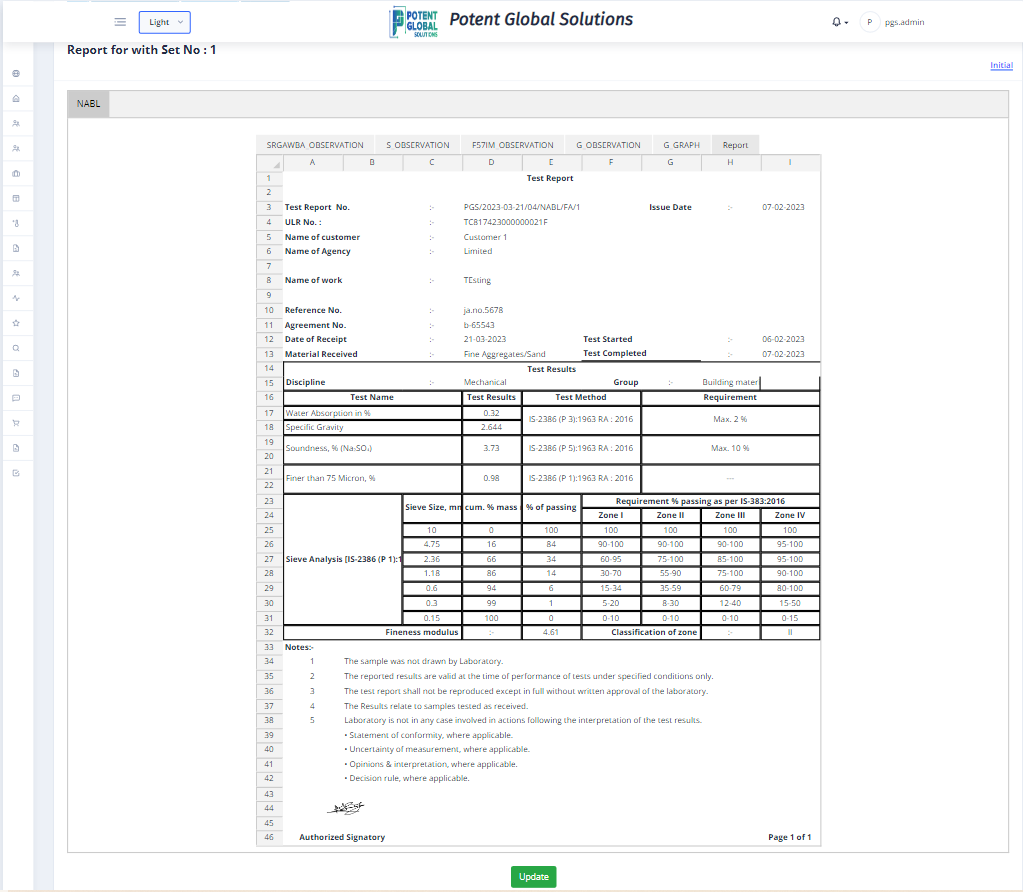
Audit Module
Audit 17025 and Reporting module in our LIMS system is designed to help laboratories ensure compliance with ISO/IEC 17025 standards, prepare for audits, and track non-conformities. By providing a range of tools and features to support compliance and reporting, the module can help laboratories improve efficiency, reduce errors, and maintain compliance with industry standards.
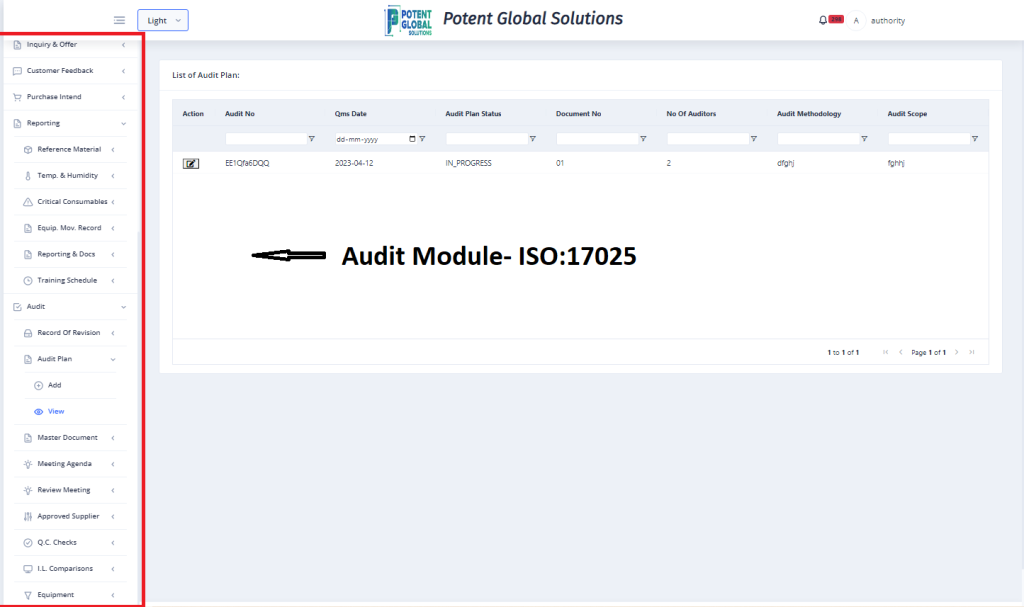
Dashboard & Reporting module.
The ability to gather insights from data is crucial for making informed decisions, and our LIMS system provides powerful analytics capabilities to help customers do just that. In addition to these standard analytics, we also offer the ability to configure custom reporting and analytics based on the specific needs of each customer. This can include custom metrics, filters, and visualization options, allowing customers to gain deeper insights into their data and make more informed decisions.
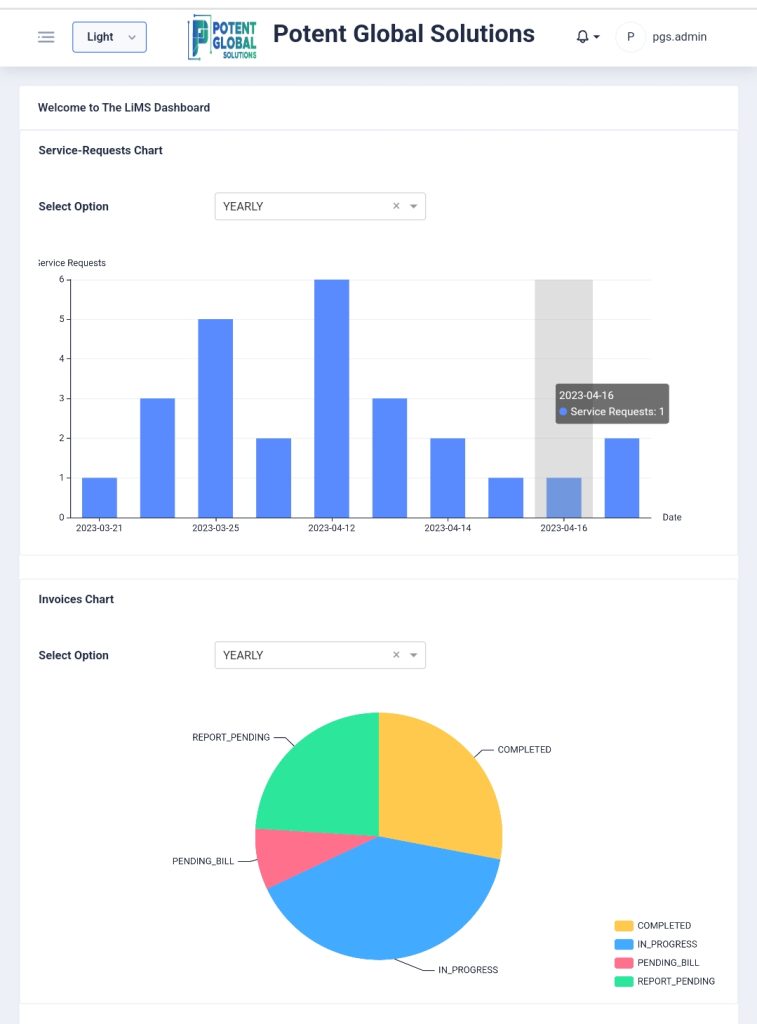
Calculation & Graph module.
LIMS (Laboratory Information Management System) context, complex calculation handling and graphing modules can provide valuable functionality for scientific and engineering laboratories. Potent LIMS provides several options for integrating complex calculation handling and graphing modules. These features can help laboratories to analyze and visualize their data more effectively, and to generate reports and dashboards that provide valuable insights into their operations.
